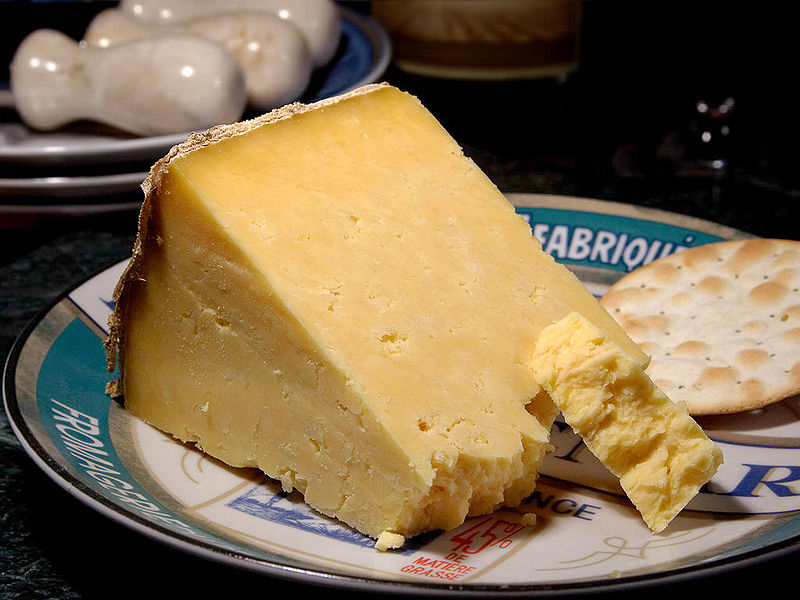
Cheshire Cheese has 3 variants, the most popular, original white version, newly revived blue version, and less known red addition. The first known mention of Chesire Cheese is in 1580 by Thomas Muffet. In the 18th century Cheshire Cheese was one of if not the most popular cheese, with 10,000 tonnes per year being produced in the early 1800's. During the late 1800's, some batches would have some blue on them, and would normally be rejected by buyers. However, many Yorkshire miners took a liking to the cheese. Eventually in 1922, Geoffrey Hutchinson began selecting batches he thought would turn blue, and selling them to London clubs, making them a sought after product. During the 60's, 70's and early 80's, the cheese's production was on and off, with it eventually fully returning and winning word champion at the 1988 World Cheese Awards. After winning, production was taken over by companies in the area, mainly John Bourne.
Most of the time, the cheese uses pasteurized milk, but in some rare cases, farmers who make it will use raw milk. The curds are normall let out to settle and drain out in the open naturally. The curds are then broken into tiny pieces.Then packed in moulds, which have openings at the top for the cheese to mold, sometimes, mold spores will be placed on the cheese for a better mold. The cheese is normally aged for 2-6 months, and during the first few days of the process, lightly pressed on.